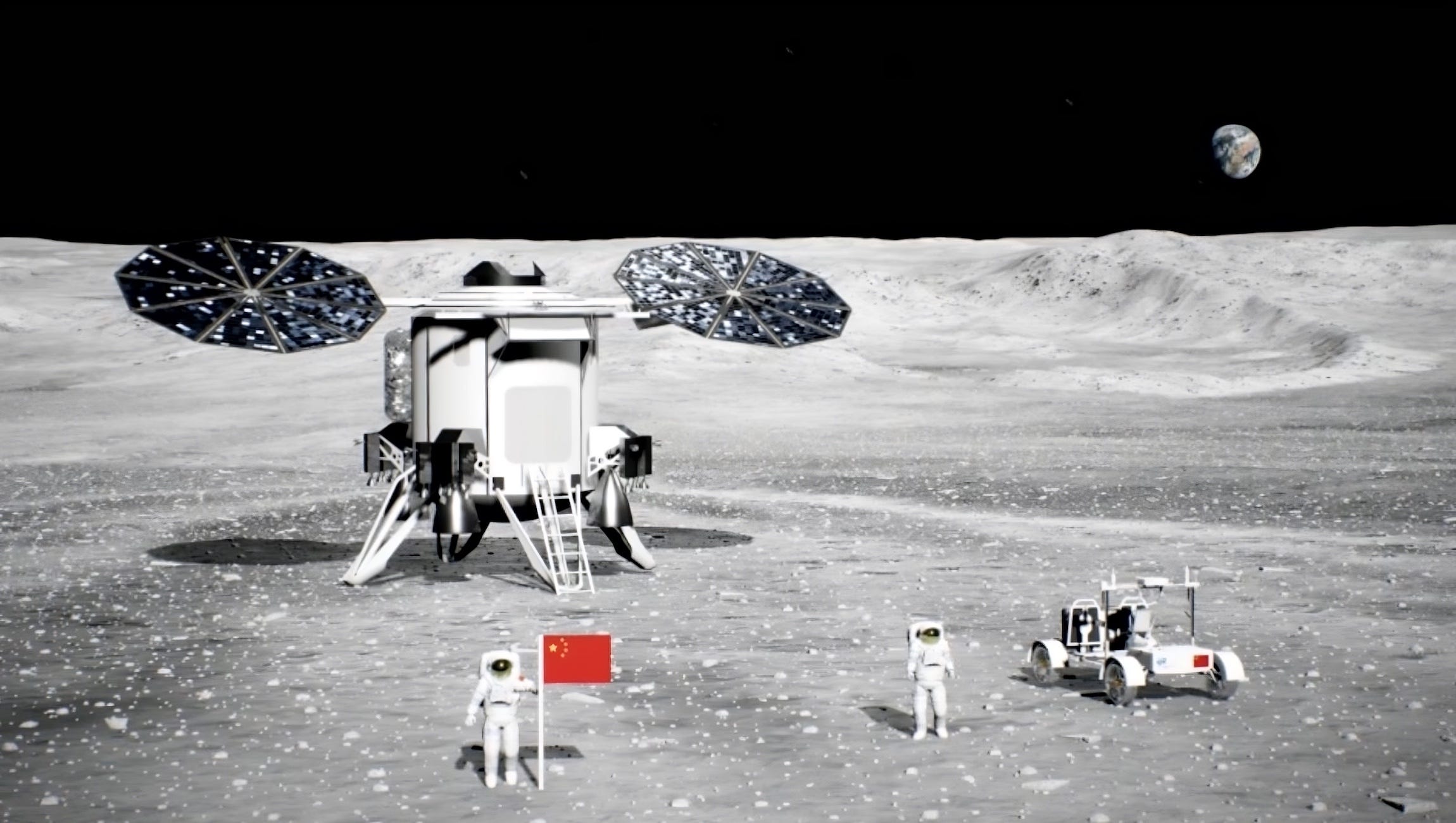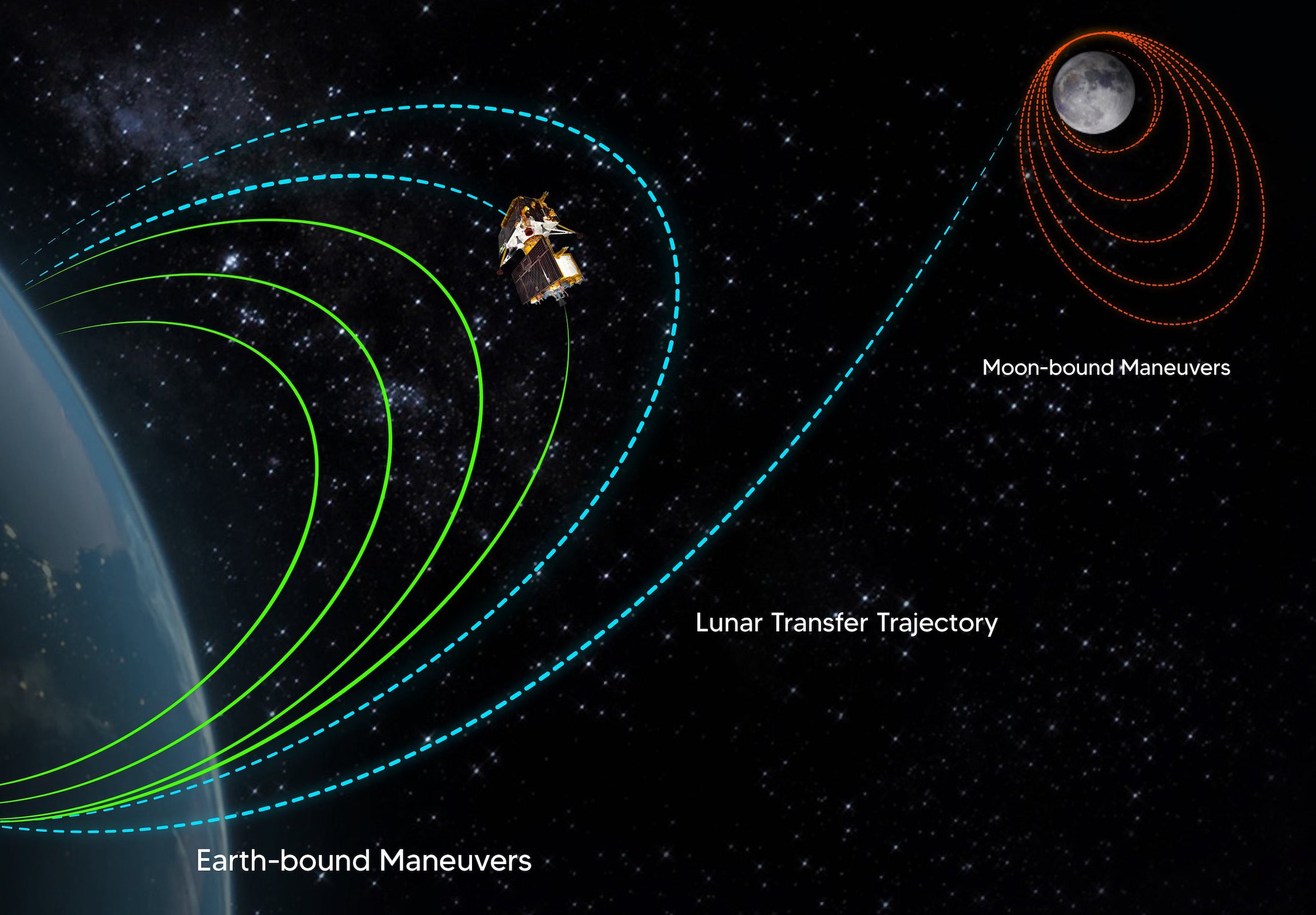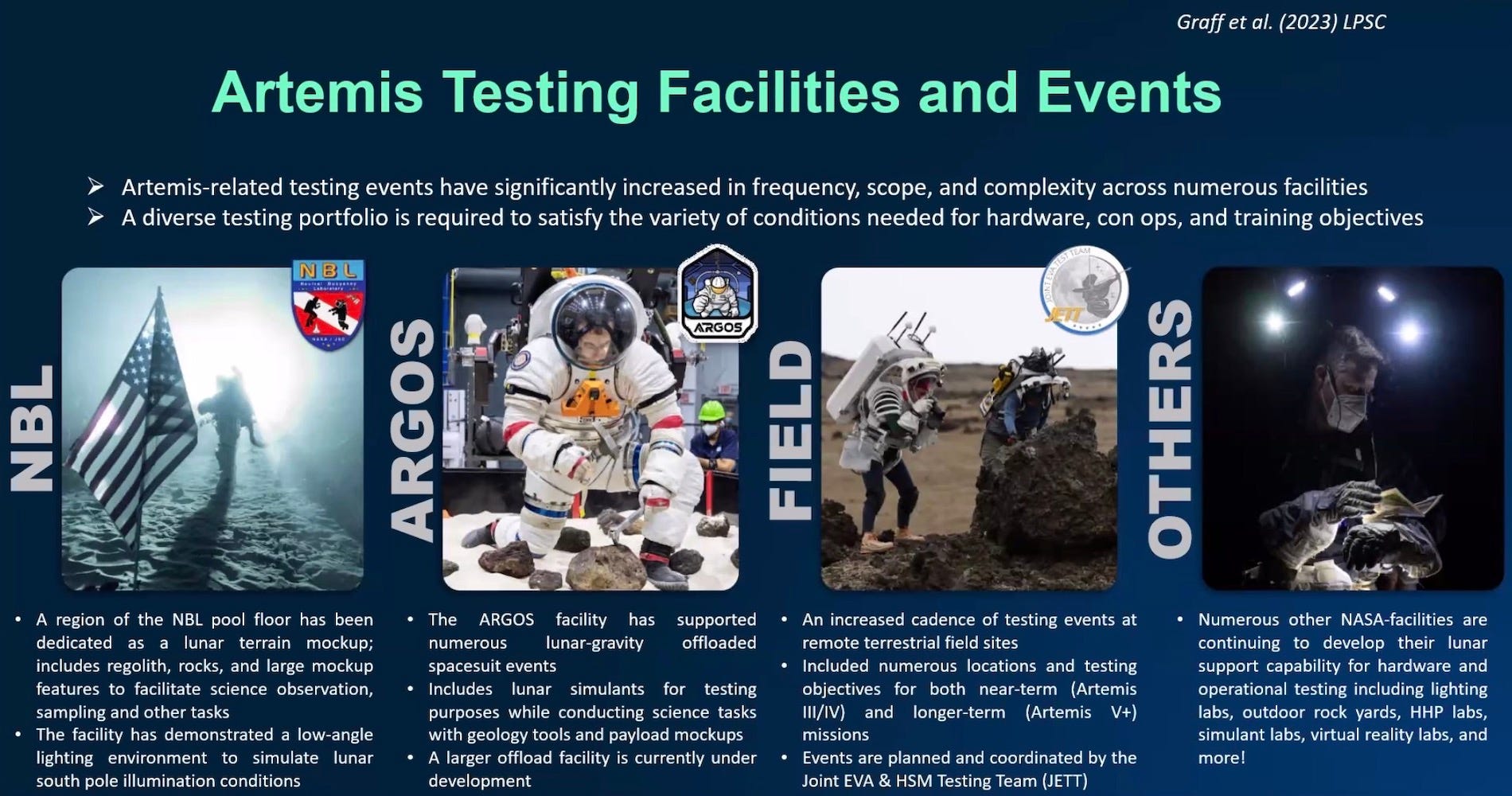Moon Monday #137: China’s crewed lunar landing, Chandrayaan 3 updates, Artemis, and more

China’s first crewed Moon landing plan
On July 12, Zhang Hailian of the China Manned Space Agency (CMSA) shared China’s current high-level plan to land two astronauts on the Moon circa 2030. As reported by Andrew Jones, the mission envisions China’s upcoming Long March 10 rocket launching a next-generation ~26,000-kilogram spacecraft with crew to lunar orbit, where it would dock with a similarly massive lunar lander launched separately by another Long March 10. Two astronauts will transfer to the lander for a lunar touchdown, and return to orbit after exploring the Moon’s surface for a few days.
China is designing the spacesuits such that astronauts should be able to explore the lunar surface for at least eight hours at a time. In May, CMSA solicited industry proposals for the mission’s lunar rover, which the crew can drive up to 10 kilometers from the landed site. On July 17, CMSA solicited science payload proposals for the mission’s lander. Similar to NASA’s Artemis III deployed science instruments call, CMSA wants these proposals to focus on lunar geology, physics, solar and astronomical observations, and life sciences. Unlike said Artemis III solicitation though, CMSA is open to in-situ resource utilization demos being proposed as well.
Relatedly, Venezuela formally joined on July 17 the upcoming China-led long-term scientific Moonbase at the Moon’s south pole called the International Lunar Research Station (ILRS). Venezuela’s key contribution will be to provide ground station infrastructure in support of both robotic and crewed missions part of ILRS, which would include China’s first crewed Moon landing.
For China, this move is in the context of the country looking for international partners to explore the Moon. As Andrew Jones reported recently, China is in the process of establishing an overarching organization to coordinate and manage the construction of ILRS. To that end, China will next complete signing of ILRS cooperation agreements with the Asia-Pacific Space Cooperation Organization, whose members are China, Pakistan, Thailand, Bangladesh, Iran, Mongolia, and Peru.
China has also seen formal interest from the UAE and Brazil, who are notably signatories of the US-led Artemis Accords. It will be a curious case if either of them proceed with full-fledged collaboration on ILRS especially since UAE’s second lunar rover supposed to be onboard China’s upcoming Chang’e 7 robotic lander was a collaboration allegedly blocked by US export control rules.
Earthbound Chandrayaan 3 continues engine burns

Following launch on July 14 and raising of its Earthbound orbit on July 17, India’s Chandrayaan 3 Moon lander performed two more orbit raising maneuvers last week. On July 18, Chandrayaan 3 fired the engines on its propulsion module to attain an orbit of 228 by 51,400 kilometers, up from 226 by 41,603. On July 20, another such maneuver raised the orbit to 233 by 71,351 kilometers, continuing the intended trajectories. ISRO says the next maneuver is planned for July 25 between 14:00 to 15:00 IST (8:30 to 9:30 UTC). The burn to push Chandrayaan 3 towards the Moon will be on July 31.
Artemis updates from NASA’s Exploration Science Forum
The hybrid 2023 NASA Exploration Science Forum held on July 18–20 provided many updates on Artemis and related lunar science & exploration missions. Here are some notable ones from the sessions I could attend:
- Artemis lunar science lead Sarah Noble said that NASA has provided “Lunar Fundamentals” classroom training for Artemis II astronauts to better equip them for their flight around the Moon and back circa early 2025 in the Orion capsule. The agency has appointed Dr. Kelsey Young as the lead for Artemis II’s lunar observing campaign. The larger context of these updates is that unlike Apollo, NASA will provide basic geology training even to mission flight controllers, flight directors, and more related people to streamline science-related phases of every Artemis mission.
- To prepare future Artemis astronauts to explore the lunar south pole’s challenging rocky terrain and unique lighting conditions, NASA is employing diverse analog facilities to cater to different aspects of how mission operations would be on the Moon. These include an underwater facility, full-scale field operations, and testing with lunar-gravity offloading. The talk didn’t mention it but such preparations also extend to NASA sending astronauts to participate in ESA’s lunar geology field training campaign called Pangaea.

- Intuitive Machines’ third Moon landing mission part of NASA’s CLPS program is progressing well towards its 2024 launch to the magnetic swirl of Reiner Gamma, said David Blewett who leads the mission’s Lunar Vertex instrument suite. Blewett noted that all of Lunar Vertex’s spectrometers and magnetometers have been delivered. He added that the Lunar-Outpost-provided rover part of the mission is intended to be shipped to Intuitive Machines for integration with the lander by October. Lunar Vertex will study Reiner Gamma’s composition, and map the strength and direction of magnetic fields on the surface. This will help us better understand the effects of solar wind and bombarding micrometeorites on planetary bodies across the Solar System, and shape our understanding of the Moon’s magnetic evolution.
- Noah Petro, project scientist for NASA’s Lunar Reconnaissance Orbiter (LRO), shared first details on LExSO, a NASA Mission Concept at the Pre-Phase A stage. Put forth as a successor to LRO, the current study assumes a 2028 launch and a ~3-year primary mission for this polar orbiter. This move is in the context of a recent report from a specialized team of US lunar scientists called CLOC-SAT, who urged NASA to replace the 2009-launched LRO in order to support the increasingly important and upcoming NASA(-funded) robotic and crewed Artemis Moon missions with advanced orbital data. In the meanwhile, a tight NASA-ISRO collaboration with India’s already existing Chandrayaan 2 orbiter—whose capabilities said report recognizes—continues to be a largely untapped opportunity, with few exceptions such as cross-organization team utilizing the Chandrayaan 2 orbiter’s radar to uniquely characterize the Artemis III candidate landing regions.
Many thanks to Epsilon3 and Nitish for sponsoring this week’s Moon Monday.
More Moon
- Jeff Foust has a good report on how NASA’s plan to have fission power systems on the Moon by end of decade is facing fiscal challenges.
- Spaceport SARABHAI, an Indian space think tank, will host an online panel discussion on August 3 regarding India’s signing of the Artemis Accords, specifically discussing how the country could navigate possible convergences and conflicts between India’s new space policy and its international obligations like the 1967 Outer Space Treaty & the 1979 Moon Agreement vis à vis the Accords. Registration is free.
- This past July 20 was International Moon Day. Well, if you read this newsletter, that might be the case for you every Monday 🌝. In any case, it’s for all such occasions of wider public interest in our Moon that I’ve created a curated webpage where people from all backgrounds can learn about and support our cosmic companion’s immense importance to science, technology, and exploration. If you like my labor of lunar love, share it with a friend, relative, or colleague you think might benefit from it or could dispatch further:
